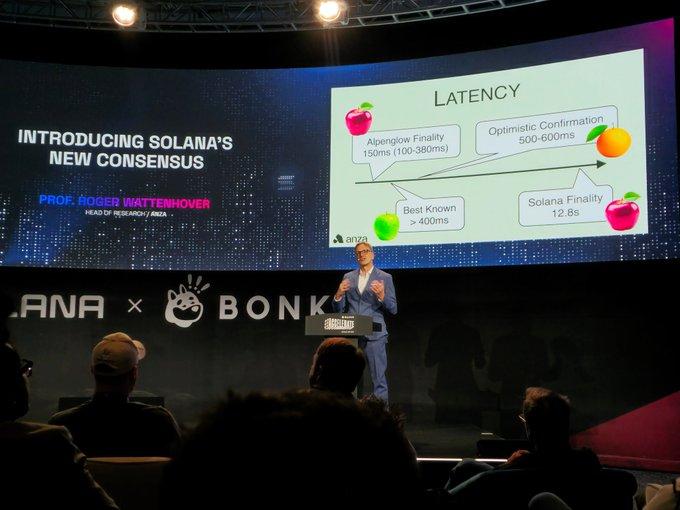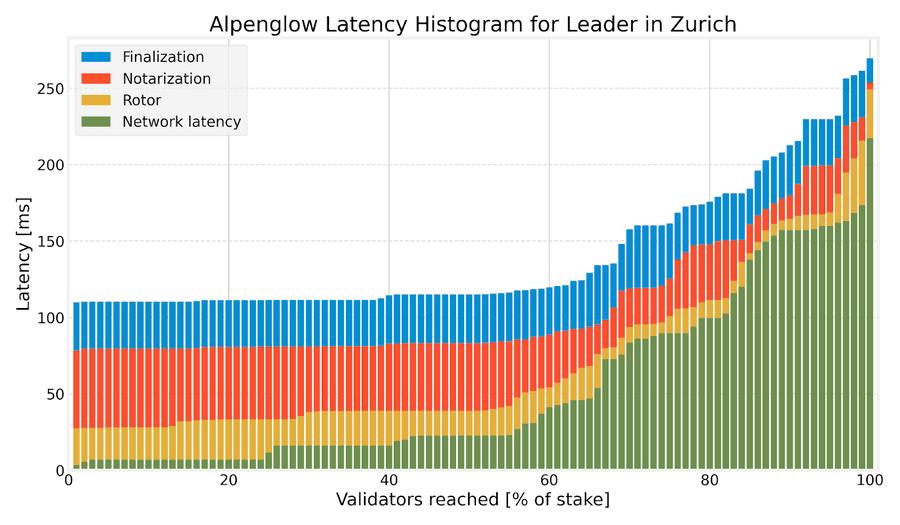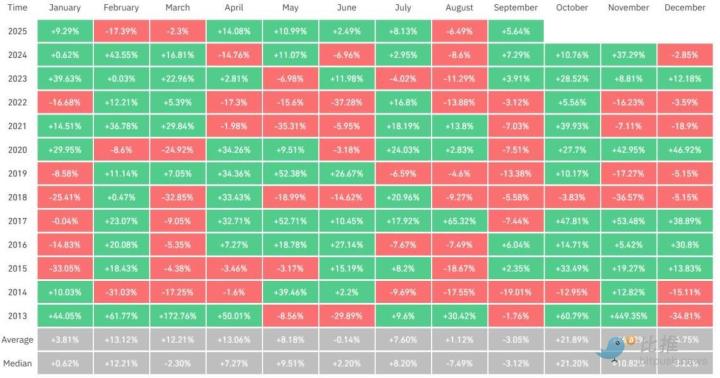Under the new architecture, transaction finality efficiency will be improved 100-fold
Written by: Pzai, Foresight News
On the evening of May 19, the developer studio Anza, previously split from Solana Labs, released the new Solana consensus layer protocol Alpenglow. This protocol changed the TowerBFT and PoH consensus mechanism, using a new component Votor responsible for voting and block finality, while using the Rotor component to improve Solana's existing block propagation protocol. It is built on Turbine (Solana's sharding version), optimizing bandwidth usage through single-layer relay nodes based on stake.
Anza's Research Director Roger Wattenhover stated at Solana Accelerate that in terms of transaction finality, the new consensus mechanism will significantly reduce the existing transaction finality duration (12.8s) to 150 ms. In the specific development process, Alpenglow has completed prototype testing and is expected to deploy on the testnet in mid-2025, and then deploy on the mainnet in late 2025 after passing the Solana Improvement Document (SIMD) proposal. Compared to the current Solana mainnet, Alpenglow simplifies the architecture and optimizes data propagation efficiency, making its performance closer to traditional internet infrastructure, suitable for high-frequency trading and real-time payment scenarios. This article will give you an overview of Alpenglow, known as the "Solana Consensus Reconstruction".

Votor will handle consensus logic and replace TowerBFT. It does not rely on the current node's "gossip" model, but instead votes on block finality through "direct communication". As the core component of the Alpenglow protocol, Votor's core innovation is reflected in communication mode, voting mechanism, and performance optimization.
First, Votor does not rely on the current node's "gossip" model, but adopts point-to-point direct communication and dynamic grouping strategy (divided by stake weight or geographical location), significantly reducing redundant message transmission and lowering network latency.
Secondly, Votor introduces a hierarchical stake voting mechanism: if a block receives over 80% stake support in the first round, it is directly notarized; if the support rate is between 60%-80%, a second round of quick confirmation is started through parallel voting tracks, while allowing nodes to actively skip voting when detecting block delay or risk, avoiding resource waste. From the data, when the overall validator threshold is below 60%, the delay can be controlled to around 100 ms.

Rotor focuses on improving block propagation efficiency and network resource allocation, integrating Turbine sharding technology to improve Solana's existing block propagation protocol. In practice, Rotor uses a single-layer relay node architecture to replace the traditional multi-layer relay model, splitting block data into lightweight shards and dynamically optimizing transmission paths, significantly reducing network complexity and transmission latency.
Additionally, Rotor introduces an adaptive propagation algorithm that monitors network status in real-time and switches congested paths, combining lightweight data verification to reduce computational overhead, significantly improving propagation speed and fault tolerance. In terms of performance, Rotor compresses block propagation latency to milliseconds, supporting Solana's goal of 50,000 TPS, meeting the needs of high-frequency scenarios such as DeFi clearing and real-time payments.
Overall, the Alpenglow protocol removes the PoH mechanism, reducing full-chain operational risks and simplifying the architecture; using Votor to replace the Tower BFT consensus, adopting a stake-driven 1-2 round voting to complete block finality within 100-150 milliseconds without relying on optimistic confirmation; Rotor optimizes Turbine sharding with a single-layer relay system, improving propagation efficiency to the physical network latency limit through global bandwidth dynamic optimization and adaptive path selection, with the main bottleneck remaining only the underlying network transmission speed. Meanwhile, system resilience is significantly enhanced, capable of withstanding extreme scenarios with 20% malicious nodes and 20% offline staking, improving attack resistance and fault tolerance. Ultimately, Alpenglow compresses transaction finality to milliseconds, providing underlying support for high-frequency trading, real-time payments, and large-scale on-chain applications.







